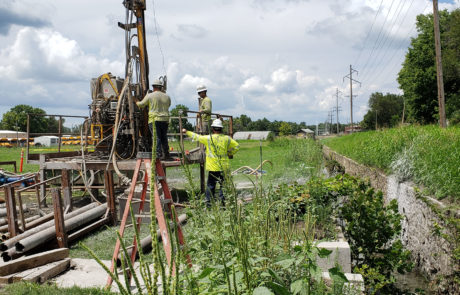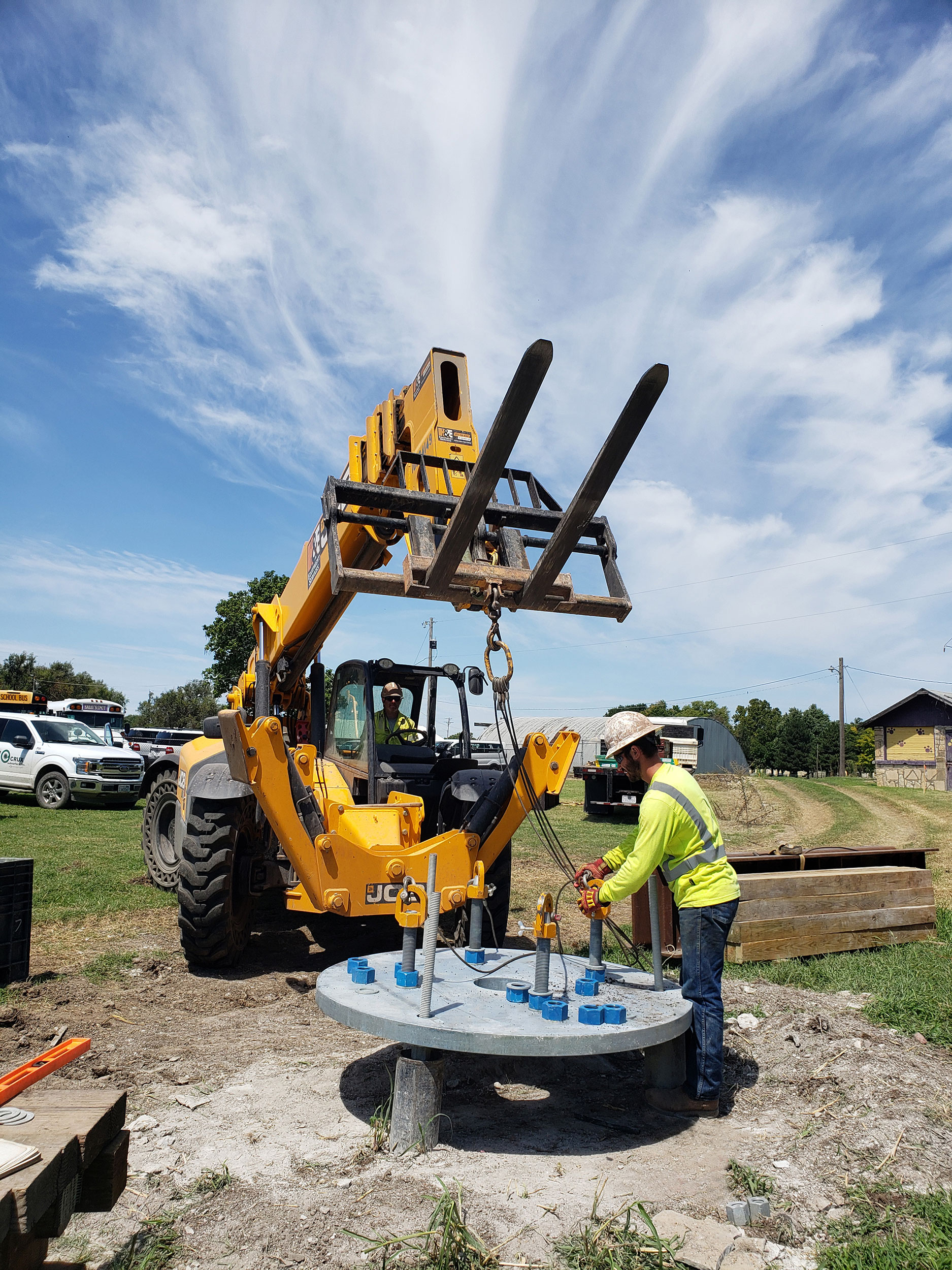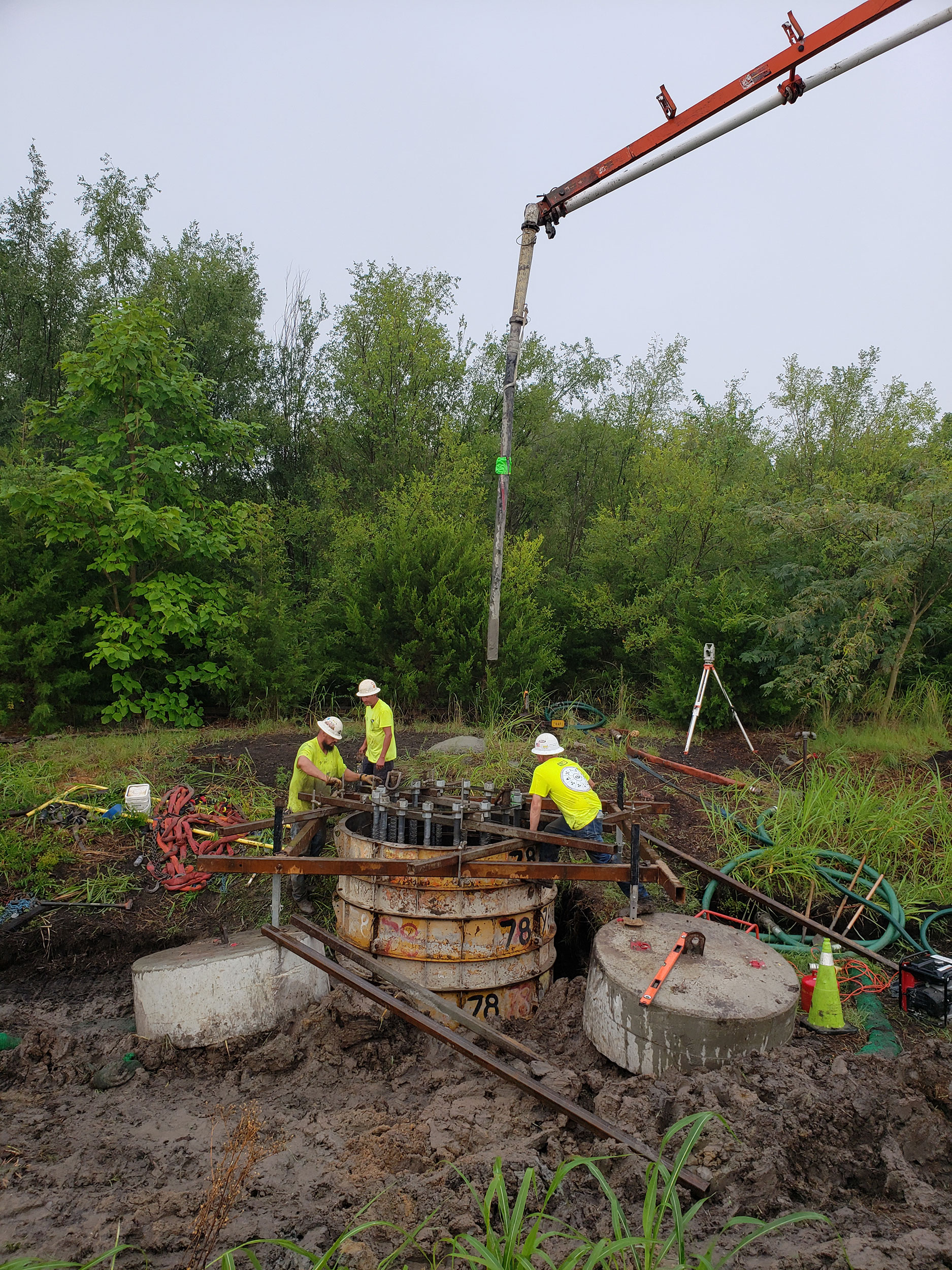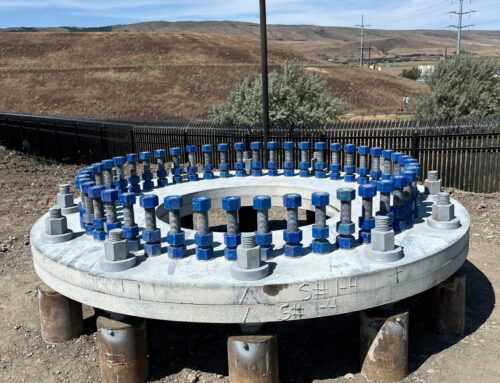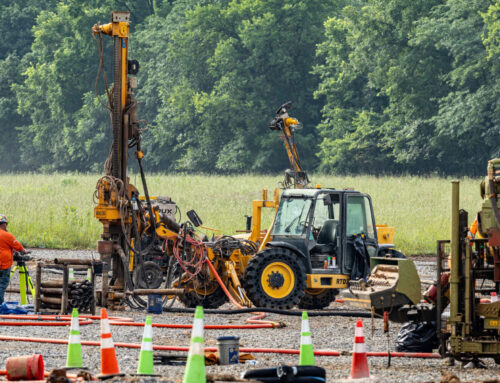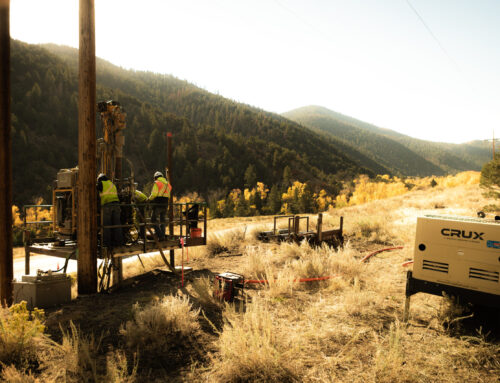
The Paris to Ark City Transmission Line involved upgrading an existing power system originally built in the 1940’s and nearing the end of its service life. The replacement 138 kV alignment features new, taller steel poles which increase the overall safety and reliability of the system.
Team Members
Evergy
Crux Subsurface
Longfellow Drilling
Crux’s Role
Crux served as foundation contractor, responsible for foundation selection, design and installation. A major consideration in the selection was that 26 of the 40 planned structures were in close proximity to a historical canal wall, and protecting the integrity of the wall was essential. With no available as-built information for the wall, Crux utilized PLAXIS geotechnical analysis software to analyze the spatial and lateral distribution of pressure on the wall from new foundations. Data from an adjacent railroad was used to establish a threshold in this analysis, as the wall had been soundly withstanding these impacts for decades. For sites where the impact from a drilled shaft could exceed the threshold, the project team diverted to a micropile foundation. Micropile foundations shed their load from smaller diameter piles, creating a smaller pressure bulb than drilled shafts. Ultimately 18 structures were supported on micropiles and 22 on drilled shafts.
Construction challenges included drilling through groundwater, limestone and clay. At micropile sites, the complex geotechnical conditions resulted in the need to use both air and mud rotary drilling methods, sometimes alternating between the two at a single structure. Extended casing lengths and bond zones were also used to mitigate the challenging conditions.
At drilled shaft sites, mobilizing large equipment through high traffic areas, narrow city streets and to sites with low overhead clearance also proved challenging. Drilled shaft contractor, Longfellow Drilling, deployed a low-clearance drill to two sites in order to mitigate these issues. The urban environment created additional obstacles, requiring close coordination to identify and avoid underground utilities, as well as to minimize impacts to local businesses and amenities. Additionally, one site was located in an area where a historical diesel spill occurred. An environmental monitor was present during construction to ensure contaminated soil was disposed of correctly.
Between 3 and 8 micropiles were installed per foundation and tied together with steel caps. Drilled shafts averaged 5 feet in diameter and 18 feet in depth. All foundation work was successfully completed with no safety incidents or impacts to the canal wall.

